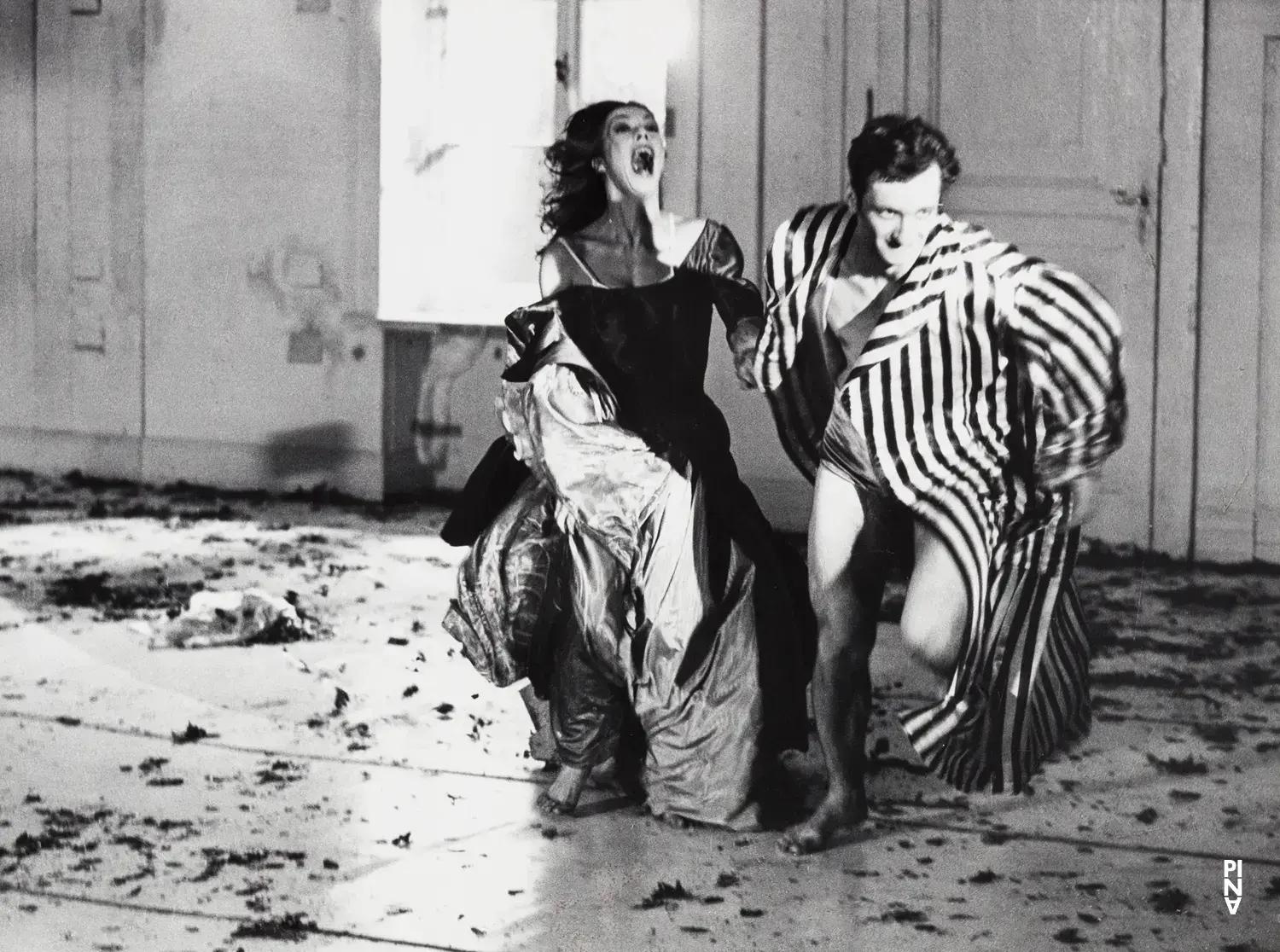Marion Cito
Marion Cito first worked as a dancer and assistant with Pina Bausch. From 1980 she is costume designer at the Tanztheater Wuppertal. She had a major impact on the style of Pina Bausch's pieces.
Information
| 1938 | born in Berlin |
| 1972 to 1975 | Dancer with Gerhard Bohner in Darmstadt |
| From 1976 | Assistant at Tanztheater Wuppertal |
| 1977 to 1979 | Dancer in four world premieres by Pina Bausch |
| 1980 to 2016 | Costume Designer at Tanztheater Wuppertal |
| Dec. 2, 2023 | died in Wuppertal |
Biography
Marion Cito
was born in 1938 in Berlin where she began dance lessons from the age of ten with Tatjana Gsovsky, who later recruited her for the Deutsche Oper Berlin. Marion Cito soon rose to become the top soloist, performing in Gsovsky works as well as choreographies by George Balanchine, Kenneth McMillan, Serge Lifar, John Cranko and Antony Tudor. Her strength was characterisation. She was also open to new ideas, dancing in the first pieces by her colleague Gerhard Bohner. In 1972, when Bohner took over as head of the Darmstadt Ballet Marion Cito went with him. But after three years the project ended due to differences with the theatre management. She now no longer wished to dance for health reasons. In 1976 Pina Bausch invited her to Wuppertal as her assistant, then persuaded her to return to the stage once more, due to casting issues, for Bluebeard, Komm, tanz mit mir (Come dance with me) and Renate wandert aus (Renate Emigrates).
From dancer to costume designer
Another change came in 1980. When Pina Bausch’s personal and professional partner Rolf Borzik died, she asked Marion Cito to take over designing the costumes. Given that the Tanztheater Wuppertal’s working methods engaged intensively with the dancers’ personalities the costumes had to be individual too and yet must also form an overall picture. They should evoke everyday life yet also exceed it. Beauty and elegance alternated with simplicity and minimalism. Alongside that there must always be space for a childish pleasure in dressing up, which generated strange and perplexing figures: a muscular man playing the god of love, shooting arrows in a tight lurex miniskirt; a man switching between cantankerous grandma and romantic ballerina in a long tutu. Men frequently appear in women’s clothes in the pieces, not for a superficial drag look but to place a question mark behind established gender roles. Clothes make the man; they are part of the role play between the sexes and they play on the social environment.
Delicate balances
For each production Marion Cito supplied a wealth of samples, buying fabric and clothes on their extended tours all over the world. Each time she was forced to rely on her intuition. Before rehearsals started, she had to sense which direction a piece might perhaps head in and plan accordingly, otherwise neither she nor the workshops could keep pace with the development of the piece. Because the pieces were assembled relatively late in the process, the practical issues only emerged towards the end: insufficient time to change, colour combinations created through constellations on stage which weren’t initially planned. Extreme flexibility and rapid reactions were required. The increasingly extensive maintenance of the repertoire was also highly labour-intensive, including urgent re-casting and, not infrequently, pregnant dancers. Her work resembled a game with endless variables and multiple unknown factors and yet over the years she developed a masterful serenity derived from a deep love of the pieces and their world view. It was only in 2016, after forty years, that Marion Cito bade farewell to the Tanztheater Wuppertal to retire. Marion Cito died in Wuppertal on 2 December 2023.
Text by Norbert Servos
Translated by Steph Morris
Gallery
Piece creation
Collaboration
Collaboration
Collaboration
Collaboration
Collaboration
Costumes
Costumes
Costumes
Costumes
Costumes
Costumes, Collaboration
Costumes
Costumes
Costumes
Costumes
Costumes
Costumes, Collaboration
Costumes, Collaboration
Assistants to the director, Costumes
Collaboration, Costumes
Collaboration, Costumes
Costumes based from Rolf Borzik´s sketches, Collaboration
Collaboration, Costumes
Collaboration, Costumes
Costumes, Collaboration
Costumes, Collaboration
Collaboration, Costumes
Collaboration, Costumes
Costumes, Collaboration
Costumes, Collaboration
Collaboration, Costumes
Collaboration
Costumes, Collaboration
With each new piece I was irresistibly drawn by Marion Cito’s costumes, the way they perfectly outlined the ‘Body’, followed the dancers’ movements to the fullest and so well conveyed our friend Pina’s choreographic intention.
Yohji Yamamoto, 2014
The costumes of Marion Cito are crucial both in the aesthetics and the theatricality of Pina Bausch’s work. Through Cito’s costumes the natural elegance of the women and men of Tanztheater Wuppertal became exemplary.
They enhance the beauty of their movements, the dancers’ individual personality and the coherence of that exceptional community of Tanztheater Wuppertal.
Anne Teresa de Keersmaeker, 2014
